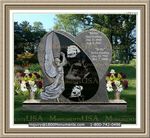|
What To Know When Composing A Funeral Notice Template
Burial preparations entail a lot of planning. When everything has been arranged, it is customary to make a public announcement to let friends and associates of the departed know the details surrounding the passing and services. These funeral notices will provide all the information people need if they wish to attend.
This announcement is different from an obituary. The obit is a shortened biography that is usually written by a member of a newspaper's staff according to a template. A notice is paid for, and written by the family, and contains more personalized information about the deceased's life and planned services.
These announcements can be made as a newspaper submission, through emails or as actual invitations. The written format will usually follow one of two standard profiles. The first consists of only the basic facts regarding the who, where and when, while the second is a more personal tribute which is sometimes accompanied by a photograph and contains a brief biographical history.
Certain information is considered standard for such announcements. The primary detail being the individual's full name, as well as commonly used nicknames and, if applicable, a maiden name. The piece may also include where they lived, the date they died, the family they leave behind and the when and where of all services to be held in their honor.
Further details of their passing may be included if desired. Adding personal information such as the person's hometown, where they were educated, places they've worked, whether they were military, their religious preferences, civic activities, hobbies and interests may be appreciated by others. It may also be prudent to identify the service officiant and chosen pallbearers.
If services are to be for family only, this should be clearly noted in the announcement. When charitable donations are requested in lieu of flowers, that stipulation can be stated in this piece. Funeral notices are more than just a formal way to let others know of a passing, they are a way to honor the dead.
|
|



























